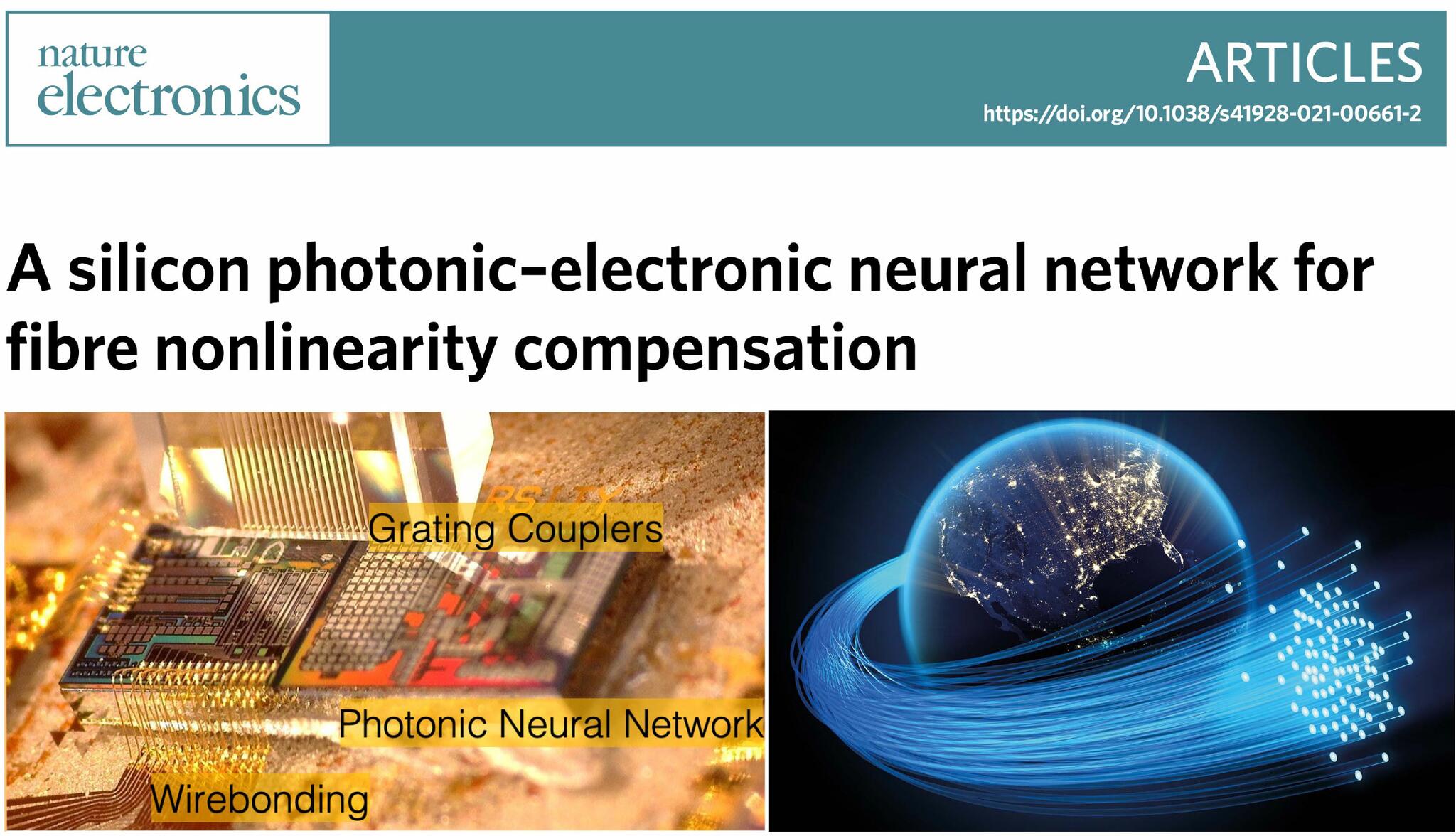Optical fibre communication enables our internet today. Data is transmitted on these links as pulses of light. Because the links can be thousands of kilometres in length, the optical pulses can get garbled. Today, very complex electronics processors are used to try and unscramble the data which is limiting the speed of data transmission.
Researchers from Queen’s (Prof. Shastri, Physics, and Prof. Tait, ECE) with collaborators, have employed artificial intelligence techniques using optical physics, and built photonic neural networks that can predict and get the data unscrambled breaking the speed limitations of electronics. This is one of the first demonstration of optical computing in a real-world application. These results are published in Nature Electronics 4, 837–844 (2021).

